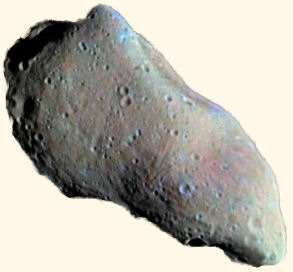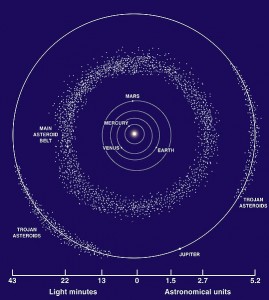An interesting news article came out recently about a $2.6 billion proposal the Keck Instituite for Space Studies in California gave to NASA. In it, they propose an un-manned mission to bring a 7 meter wide asteroid into Lunar orbit which they say will help humans gain experience for expeditions beyond Earth-moon systems to planets like Mars and Jupiter.
But you may be asking to yourself why this proposal is even being considered and what significance it has to human space travel. Well, to put it into perspective, the space rover Curiosity that landed on Mars recently cost around $2.5 billion dollars for the near 8 month journey. While the flight time for a manned mission to travel the 225 million kilometers, the cost would be significantly more due to the additional fuel, food and other costs to support the humans that would have to travel this distance. Then, when we look at the additional 555 million kilometers it would take to travel from Mars to Jupiter, we see that right now, there is no feasible way for humans to travel to Mars let alone planets after it.
This is where the proposal by the Keck Instituite would come in. By bringing the asteroid to lunar orbit, researchers would then develop a space station inside the asteroid as a new launching pad for space exploration to planets like Mars and Jupiter. Not only that, scientists also believe that humans could learn how to efficiently extract water from the asteroids as a means to not only help feed the astronauts, but also an off-Earth course of radiation shielding and rocket fuel! Not only that, but the captured asteroid would also allow humans to hone and acquire precision flying techniques that manned missions to more distant destinations would acquire. They also believe that the asteroid could also shed light on the best ways to deflect potentially dangerous asteroids away from Earth!

Video explaining how this would work by NMANewsDirect
While the benefits of this proposal could be immense, the science behind the probe that would capture the asteroid is still an unknown. The Keck team envision the un-manned probe to be propelled by solar-heated ions from a rocket. It would then travel to find an asteroid around 7 metres wide and after studying it briefly, it would release a 10 by 15 metre bag to catch it and head back towards the moon. From their initial estimations, this mission could take anywhere between 6 and 10 years for the capture and transport to lunar orbit.
I feel that, while the proposal seems really out of this world initially, it actually is something that I think could have an immense impact on space travel outside of our Earth-Moon system. Who knows, if all else fails, the asteroid could be bought by Disney and be turned into its next amusement park seeing as how Disney is buying everything nowadays.
-Ho-Hin Leung



One response to “One Small Step for Man, One Gian Rock for Mankind”